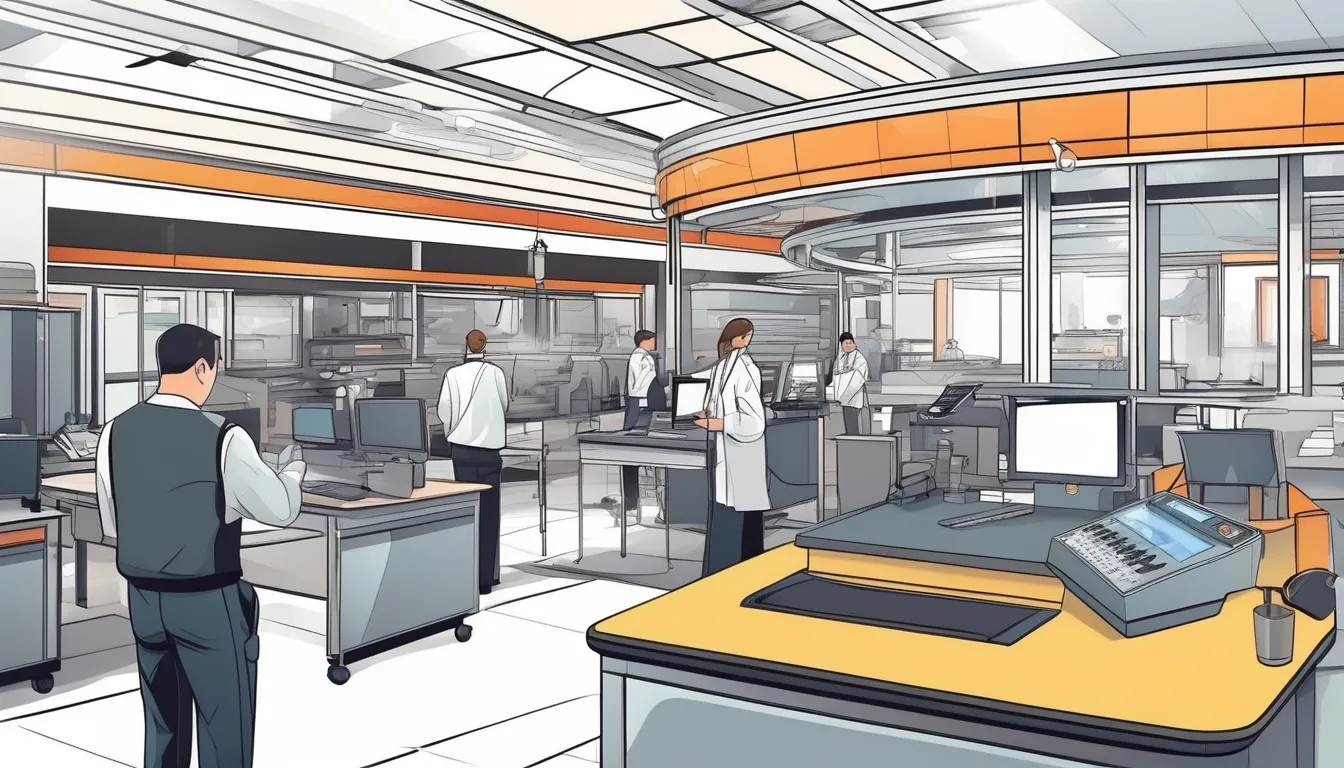As you walk through airport security or watch a crime drama, you’ve likely seen forensics detectors in action, but have you ever wondered how they actually work? These devices can detect minute amounts of substances like explosives and narcotics with remarkable accuracy. But what’s behind this technology? It all starts with advanced methods like ion mobility spectrometry and mass spectrometry, which can separate and identify specific molecules within complex mixtures. But how do these techniques work, and what other technologies are being used to aid in forensic detection? The answer lies in the cutting-edge science driving these innovations.
Ion Mobility Spectrometry Technology
Ion Mobility Spectrometry (IMS) technology is a crucial tool in forensics detection. You’re probably wondering how it works. IMS involves ionizing a sample, which creates charged particles that are then separated based on their mobility in an electric field.
This separation is critical, as it allows for the identification of specific molecules within a complex mixture.
You’ll typically find IMS devices used in airports, border crossings, and other high-security areas. These devices can detect a wide range of substances, including explosives, narcotics, and other hazardous materials.
In a typical setup, you’ll see a sample being ionized, and then the ions are drawn into a drift tube. The electric field in the drift tube separates the ions based on their mobility, which is a function of their mass, charge, and shape.
As you analyze the results, you’ll see a spectrum that displays the intensity of the ions versus their drift time. This spectrum can be used to identify specific substances, making IMS a powerful tool in forensic detection.
With its high sensitivity and selectivity, IMS is an essential tool in the fight against crime and terrorism.
Advanced Chemical Detection Methods
Several advanced chemical detection methods complement Ion Mobility Spectrometry (IMS) in the field of forensic detection. These methods enhance the accuracy and speed of chemical identification, making them invaluable tools in forensic analysis. You’ll find these advanced methods used in various applications, from law enforcement to environmental monitoring.
| Method | Description | Advantages |
|---|---|---|
| Gas Chromatography (GC) | Separates and analyzes chemical compounds based on boiling points and affinity for a stationary phase. | High resolution, sensitivity, and specificity. |
| Mass Spectrometry (MS) | Identifies chemical compounds based on mass-to-charge ratio. | High accuracy, precision, and ability to detect low concentrations. |
| Raman Spectroscopy | Analyzes molecular vibrations to identify chemical compounds. | Non-destructive, fast analysis, and minimal sample preparation. |
| Infrared Spectroscopy | Identifies chemical compounds based on molecular vibrations and absorption of infrared radiation. | Fast analysis, minimal sample preparation, and high specificity. |
| Surface-Enhanced Raman Spectroscopy (SERS) | Enhances Raman signals using metal nanoparticles or nanostructured surfaces. | High sensitivity, specificity, and ability to detect low concentrations.
Physics Behind Explosive Detectors
In the high-stakes world of forensic detection, understanding the physics behind explosive detectors is crucial for identifying potential threats.
You need to grasp the underlying principles to effectively use these devices. Explosive detectors rely on various physical phenomena to detect and identify explosive materials.
When an explosive material is present, it emits or absorbs specific types of radiation, such as X-rays, gamma rays, or neutrons. Detectors use sensors to measure these radiation types and identify the material.
Other detectors use ion mobility spectrometry (IMS), which separates ions based on their mobility in an electric field.
Here are the key physics-based principles behind explosive detectors:
- Radiation detection: Measuring the radiation emitted or absorbed by explosive materials.
- Ion mobility spectrometry: Separating ions based on their mobility in an electric field to identify explosive materials.
- Thermal neutron analysis: Detecting the neutrons emitted by explosive materials when exposed to a thermal neutron source.
Biological Agent Detection Techniques
Moving from the realm of explosive detection, you’ll find that identifying biological agents poses a different set of challenges. Biological agents, such as bacteria, viruses, and toxins, can be difficult to detect due to their small size and the need for specialized equipment.
You’ll need to consider various techniques, including immunoassays, polymerase chain reaction (PCR), and mass spectrometry. Immunoassays use antibodies to detect specific biological agents, providing rapid and sensitive results. PCR, on the other hand, amplifies genetic material to detect the presence of a biological agent. This technique is highly specific and can detect even small amounts of DNA or RNA. Mass spectrometry, such as matrix-assisted laser desorption/ionization (MALDI), can identify biological agents based on their unique molecular signatures.
As a forensic investigator, you’ll need to choose the most suitable technique based on the type of biological agent, sample type, and equipment availability. Each technique has its strengths and limitations, and understanding these will help you make informed decisions.
Surface Enhanced Raman Spectroscopy
Surface Enhanced Raman Spectroscopy (SERS) is a powerful analytical technique that can boost the sensitivity and specificity of Raman spectroscopy. This method enhances the Raman signal by using metal nanoparticles or rough metal surfaces, making it a valuable tool for detecting and identifying substances at the molecular level.
When you use SERS, you can detect even the smallest amounts of a substance, making it ideal ozone detectors forensic applications.
As you explore the capabilities of SERS, you’ll discover its potential for detecting a wide range of substances, from explosives to narcotics.
Here are three key benefits of using SERS in forensic analysis:
- Improved sensitivity: SERS can detect substances at concentrations as low as a few parts per billion.
- Enhanced specificity: SERS can distinguish between different substances with similar chemical structures.
- Rapid analysis: SERS can provide results in a matter of seconds, making it a valuable tool for real-time forensic analysis.
Conclusion
You’ve seen how advanced technologies like ion mobility spectrometry, mass spectrometry, and surface-enhanced Raman spectroscopy have transformed forensic detection. These methods offer high accuracy, precision, and sensitivity in identifying substances like explosives and narcotics. By understanding the science behind these techniques, you’ve gained insight into the powerful tools used to uncover the truth and bring justice to those who’ve been wronged. Now, you’re more aware of the cutting-edge technology that drives forensic detection.




